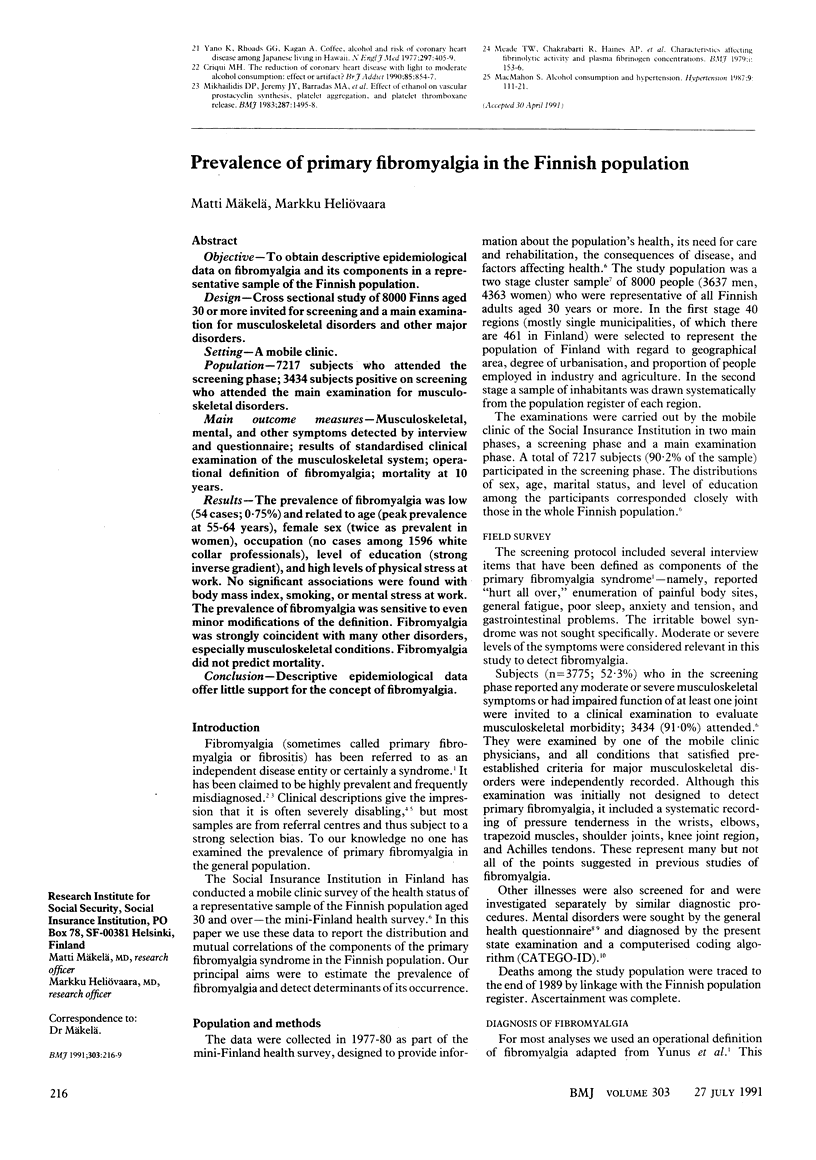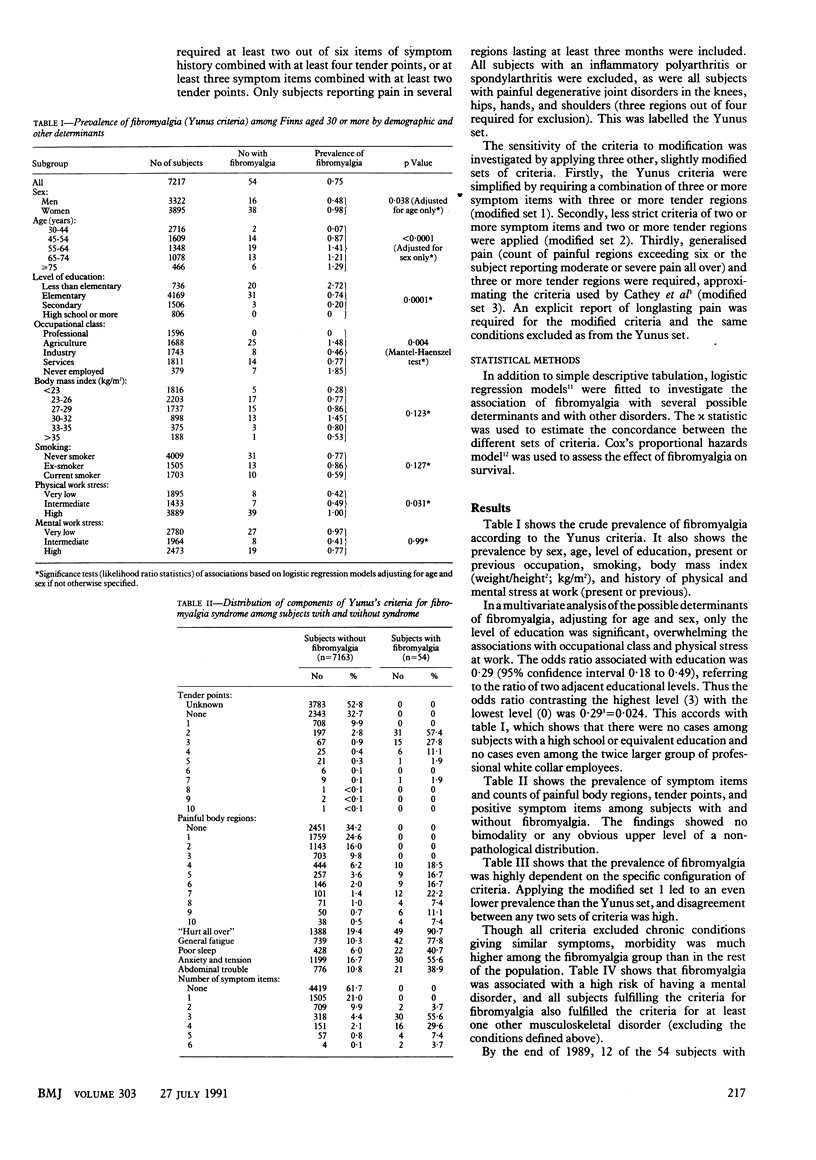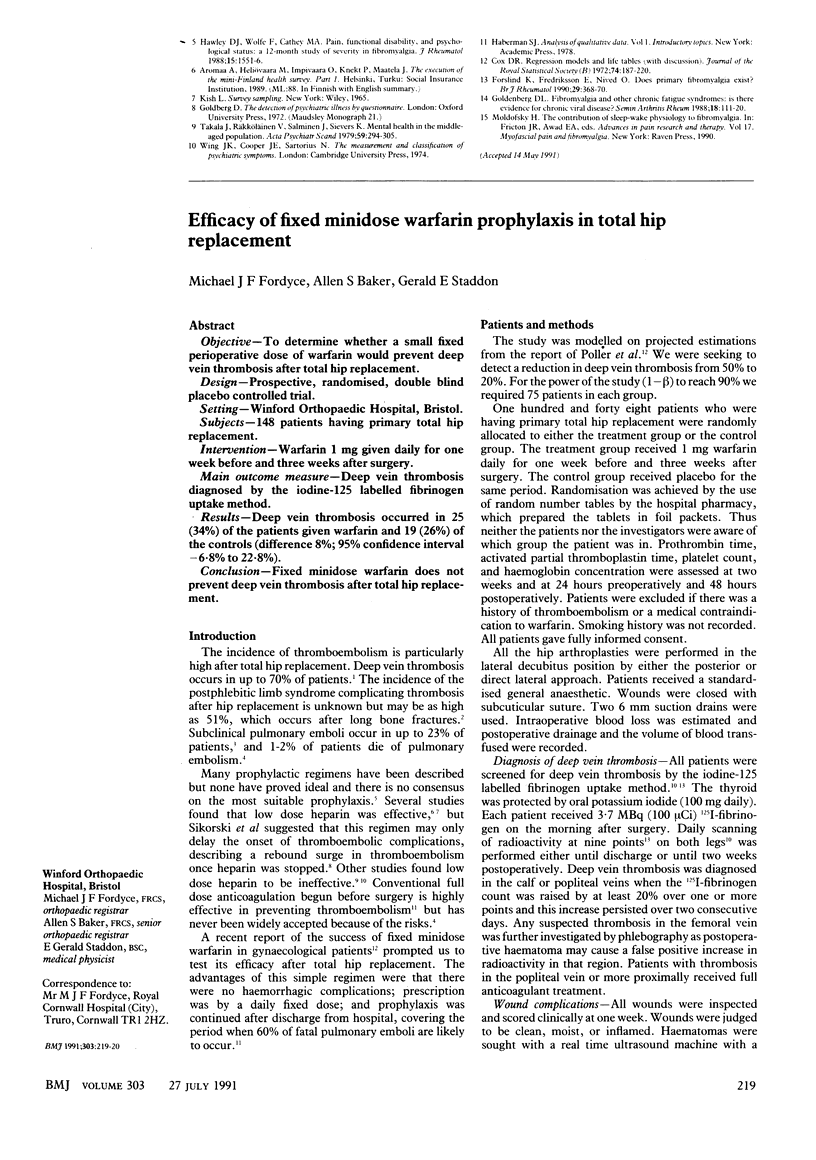Abstract
OBJECTIVE--To obtain descriptive epidemiological data on fibromyalgia and its components in a representative sample of the Finnish population. DESIGN--Cross sectional study of 8000 Finns aged 30 or more invited for screening and a main examination for musculoskeletal disorders and other major disorders. SETTING--A mobile clinic. POPULATION--7217 subjects who attended the screening phase; 3434 subjects positive on screening who attended the main examination for musculoskeletal disorders. MAIN OUTCOME MEASURES--Musculoskeletal, mental, and other symptoms detected by interview and questionnaire; results of standardised clinical examination of the musculoskeletal system; operational definition of fibromyalgia; mortality at 10 years. RESULTS--The prevalence of fibromyalgia was low (54 cases; 0.75%) and related to age (peak prevalence at 55-64 years), female sex (twice as prevalent in women), occupation (no cases among 1596 white collar professionals), level of education (strong inverse gradient), and high levels of physical stress at work. No significant associations were found with body mass index, smoking, or mental stress at work. The prevalence of fibromyalgia was sensitive to even minor modifications of the definition. Fibromyalgia was strongly coincident with many other disorders, especially musculoskeletal conditions. Fibromyalgia did not predict mortality. CONCLUSION--Descriptive epidemiological data offer little support for the concept of fibromyalgia.
Full text
PDF



Selected References
These references are in PubMed. This may not be the complete list of references from this article.
- Campbell S. M., Clark S., Tindall E. A., Forehand M. E., Bennett R. M. Clinical characteristics of fibrositis. I. A "blinded," controlled study of symptoms and tender points. Arthritis Rheum. 1983 Jul;26(7):817–824. doi: 10.1002/art.1780260701. [DOI] [PubMed] [Google Scholar]
- Cathey M. A., Wolfe F., Kleinheksel S. M., Hawley D. J. Socioeconomic impact of fibrositis. A study of 81 patients with primary fibrositis. Am J Med. 1986 Sep 29;81(3A):78–84. doi: 10.1016/0002-9343(86)90882-x. [DOI] [PubMed] [Google Scholar]
- Forslind K., Fredriksson E., Nived O. Does primary fibromyalgia exist? Br J Rheumatol. 1990 Oct;29(5):368–370. doi: 10.1093/rheumatology/29.5.368. [DOI] [PubMed] [Google Scholar]
- Hawley D. J., Wolfe F., Cathey M. A. Pain, functional disability, and psychological status: a 12-month study of severity in fibromyalgia. J Rheumatol. 1988 Oct;15(10):1551–1556. [PubMed] [Google Scholar]
- Takala J., Räkköläinen V., Salminen J., Sievers K. Mental health in the middle-aged population. Acta Psychiatr Scand. 1979 Mar;59(3):294–305. doi: 10.1111/j.1600-0447.1979.tb06968.x. [DOI] [PubMed] [Google Scholar]
- Yunus M., Masi A. T., Calabro J. J., Miller K. A., Feigenbaum S. L. Primary fibromyalgia (fibrositis): clinical study of 50 patients with matched normal controls. Semin Arthritis Rheum. 1981 Aug;11(1):151–171. doi: 10.1016/0049-0172(81)90096-2. [DOI] [PubMed] [Google Scholar]


